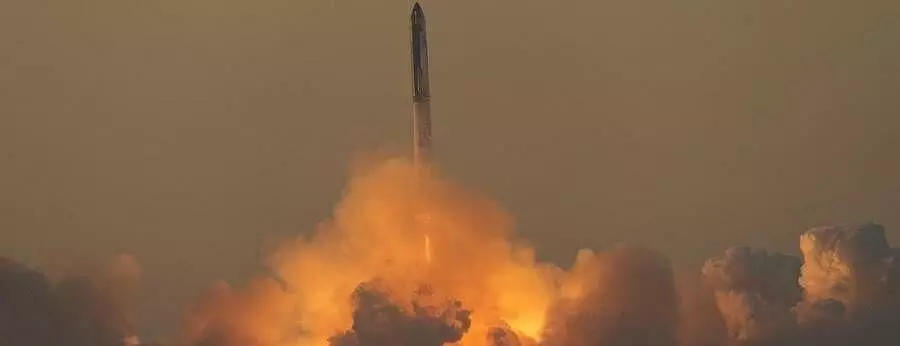
Explosions ends 2nd test flight of SpaceX's new Starship rocket
text_fieldsBoca Chica, Texas: After launching its massive rocket Starship, SpaceX lost control of both the booster and the spaceship in two explosions that occurred minutes into the test flight on Saturday.
After the rocketship took off from South Texas and into space, communication was abruptly cut off. According to SpaceX authorities, the spacecraft appears to have blown up over the Gulf of Mexico due to a malfunction in its self-destruct system.
The engines were nearly finished firing to set the ship on an orbital course, marking the conclusion of the flight. An explosion also occurred during the first test flight in April, the Associated Press reported.
The separated booster exploded over the gulf on Saturday as well, roughly three minutes into the flight. However, by then, its work was over.
The almost eight-minute flight was twice as long as the test conducted in April, despite the mishap. Starship is the largest and most powerful rocket ever constructed, standing at about 400 feet (121 metres), and it is intended to transport humans to the moon and Mars.
“The real topping on the cake today, is that successful liftoff,” said SpaceX commentator John Insprucker.
Added commentator Kate Tice: "We got so much data, and that will all help us to improve for our next flight.”
Elon Musk, the founder of SpaceX, observed from behind launch controls at the southern tip of Texas, close to the border with Mexico, or near Boca Chica Beach. Employees at the company's Hawthorne, California, headquarters rejoiced when Starship eventually lifted off at daybreak. When it became evident that the spaceship had crashed into the gulf and was destroyed, the room fell silent. The booster fell into the gulf as well.
SpaceX had set a target altitude of 150 miles (240 km), which was just high enough to launch the bullet-shaped spacecraft around the world and, approximately 1 1/2 hours after launch, drop it into the Pacific near Hawaii, short of completing an orbit.
SpaceX upgraded the launcher, its 33 engines, and the launch pad numerous times after the April flight demo. On Wednesday, the Federal Aviation Administration gave the rocket the all-clear to take off after verifying that all safety and environmental requirements had been completed.























